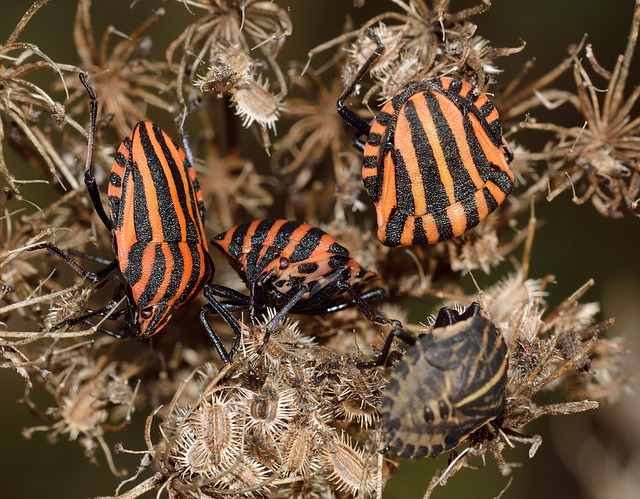Bed bug heat treatment is a safe, effective, and eco-friendly alternative to traditional fumigation methods. It uses precise temperature control (120-150°F) to kill bed bugs and their eggs at all life stages, with specialized equipment ensuring even heat distribution. This method avoids harmful chemicals, minimizes energy usage, and allows spaces to be habitable within hours. Preparation includes removing valuable items, packing them securely, and temporarily vacating the premises. Safety measures involve evacuating treated areas, ensuring proper ventilation, and monitoring temperature/gas levels. Choosing a reputable professional with experience in heat treatment is crucial for reliable, effective, and affordable results. Bed bug heat treatment is safer and more environmentally friendly than chemical fumigation, making it a cost-effective option, especially in sensitive environments. Post-treatment, maintaining a pest-free environment through regular cleaning, fixing hiding spots, using encasings, and inspecting items helps prevent future infestations.
Looking for an effective yet affordable way to rid your home of bed bugs? Bed bug heat treatment is a powerful and non-toxic solution gaining popularity. This comprehensive guide explores the benefits of heat fumigation over traditional methods. From understanding the process to choosing the right professionals, you’ll discover why this method is becoming a top choice. Learn about safety measures, debunked myths, cost comparisons, and post-treatment maintenance for a pest-free environment.
Understanding Bed Bug Heat Treatment: An Overview

Bed bug heat treatment is a specialized process designed to eliminate these persistent pests from homes and commercial spaces efficiently. Unlike traditional fumigation methods that rely on chemical pesticides, this approach utilizes precise temperature control to kill bed bugs at all stages of their life cycle. The treatment involves heating the infested area to specific temperatures, typically above 120°F (49°C), which is harmful to bed bugs but safe for most materials and structures.
This method is particularly effective because bed bugs are sensitive to heat, with a narrow temperature range in which they can survive. Professional technicians employ specialized equipment to evenly distribute heat throughout the affected zones, ensuring every nook and cranny is treated. Heat treatment is also environmentally friendly, as it doesn’t leave behind harmful residues like pesticides do. It’s especially useful for treating hard-to-reach areas or items that cannot be easily moved, making it a popular choice for affordable bed bug fumigation.
Advantages of Using Heat for Bed Bug Elimination

Bed bug heat treatment offers several advantages over traditional fumigation methods, making it a growingly popular option for both residential and commercial spaces. One of the key benefits is its non-invasive nature; heat treatment does not require the use of harmful chemicals, which can be appealing to environmentally conscious individuals and those with sensitive skin or respiratory conditions. This method also proves effective against all life stages of bed bugs, from eggs to adults, ensuring a thorough elimination.
Moreover, heat treatments are faster than fumigation, as they can quickly raise temperatures to levels that are fatal for bed bugs. This efficiency means less downtime for affected areas, with many spaces becoming safe and habitable within hours rather than days. The process is also highly targeted, focusing on the infested areas, which helps reduce energy usage and minimizes potential damage to belongings often seen with fumigation methods.
How Does Bed Bug Heat Fumigation Work?

Bed bug heat fumigation is a highly effective method for eradicating these persistent pests from homes and businesses. Unlike traditional chemical treatments, this process utilizes high temperatures to kill bed bugs and their eggs at all stages of development. The procedure involves heating the infested area to specific temperature ranges, typically between 120-150°F (49-66°C), for a defined period. This heat is distributed evenly to ensure every corner and crevice is reached, where bed bugs tend to hide. By raising the temperature above their survival threshold, the bed bugs are quickly eliminated.
This bed bug heat treatment offers several advantages. It’s environmentally friendly as it avoids the use of toxic chemicals, making it a safer option for residents and pets. Additionally, heat fumigation is swift, often taking just a few hours to complete, allowing for quicker re-entry into treated areas compared to some chemical treatments. The process also leaves no residual chemicals, reducing potential health risks associated with long-term exposure to pesticides.
Preparation Before Bed Bug Heat Treatment

Before undergoing a bed bug heat treatment, thorough preparation is essential for effective and efficient results. The first step involves ensuring all valuable items are removed from the treated areas. This includes furniture, decorative pieces, and personal belongings that may be sensitive to high temperatures. It’s crucial to pack these items securely in plastic containers or bags, labeling them clearly to avoid mix-ups during the process.
Additionally, vacating the premises temporarily is recommended. Bed bug heat treatments often require elevated temperatures to eliminate all stages of bed bugs—eggs, nymphs, and adults. As these temperatures can be hazardous for occupants, leaving the space allows professionals to work safely and thoroughly. Proper preparation ensures a seamless treatment process, minimizing disruptions and maximizing the effectiveness of the bed bug heat treatment.
Safety Measures During the Process

During the bed bug heat treatment process, safety is paramount for both residents and technicians. It’s crucial to evacuate the treated areas, ensuring no one is present while toxic gases or heat levels are at their peak. Well-ventilated spaces are essential to prevent the accumulation of harmful residues. Professional fumigators employ specialized equipment to monitor temperature and gas levels, adhering to strict safety protocols throughout the process.
Respiratory protection, including masks and goggles, is typically worn by technicians to safeguard against inhaling toxic chemicals or bed bug debris. Additionally, protective clothing prevents skin exposure to potential allergens or irritants. After treatment, thorough cleaning and decontamination of equipment and entry points are done to minimize any lingering risks. These safety measures ensure a successful and secure bed bug heat treatment, providing peace of mind for residents.
Choosing the Right Professional Services

When considering bed bug heat treatment, selecting the right professional services is paramount to ensuring effective and affordable fumigation. Researching and choosing a reputable company with experience in bed bug control is essential. Look for companies that specialize in heat treatment, as this method is known for its efficiency and minimal impact on personal belongings compared to traditional pesticides.
Check their credentials, insurance, and customer reviews to gauge their reliability and expertise. A good professional service will offer transparent pricing, detailed explanations of the process, and aftercare advice. They should also provide options tailored to your budget, ensuring you receive quality treatment without breaking the bank.
Common Myths and Misconceptions Debunked

Many people have misconceptions about bed bugs and their treatment, often due to the prevalence of misinformation online. One common myth is that DIY methods or over-the-counter products can effectively eliminate bed bugs. While these may provide a temporary solution, they are not as powerful or reliable as professional bed bug heat treatment. Heat treatments using specialized equipment have been proven to kill all stages of bed bugs—eggs, nymphs, and adults—and prevent reinfestation more effectively than alternative methods.
Another misconception is that bed bugs only inhabit dirty or unkempt spaces. In reality, these pests are attracted to carbon dioxide and body heat, making them equally likely to infest clean, well-maintained homes as they are neglected ones. This is why professional fumigation services use safe, targeted heat treatments rather than harsh chemicals, ensuring a comfortable environment for both residents and their pets while effectively eradicating bed bugs at their source.
Cost Comparison: Heat Treatment vs Traditional Methods

When considering affordable bed bug fumigation, it’s essential to compare various methods, particularly between traditional chemical treatments and bed bug heat treatment. Heat treatment, also known as thermal remediation, has gained popularity for its effectiveness in eliminating bed bugs without relying on harsh pesticides. This method involves heating a room or affected area to specific temperatures, usually above 120°F (49°C), to kill all stages of the bed bug life cycle.
Compared to traditional fumigation methods that often use toxic chemicals like pyrethroid pesticides, heat treatment is not only safer for humans and pets but also more environmentally friendly. While initial costs for specialized equipment may be higher, long-term savings, reduced health risks, and the absence of chemical residue make bed bug heat treatment a cost-effective and preferable option for many, especially in sensitive environments like schools or hospitals.
Maintaining a Pest-Free Environment Post-Treatment

After successful bed bug heat treatment, maintaining a pest-free environment is crucial. It involves regular cleaning and inspection to prevent any recurrence. Vacuuming floors, dusting surfaces, and laundering clothes at high temperatures can help eliminate any remaining bed bugs or eggs. It’s also essential to fix any cracks or crevices in walls and furniture, as these are common hiding spots for bed bugs.
Additionally, using pest-preventive measures such as encasings for mattresses and box springs can provide an extra layer of protection. Keeping your home clean and clutter-free reduces places where bed bugs can breed and hide. Regularly inspecting items brought into the home, like secondhand furniture or clothing, can also help prevent future infestations.
